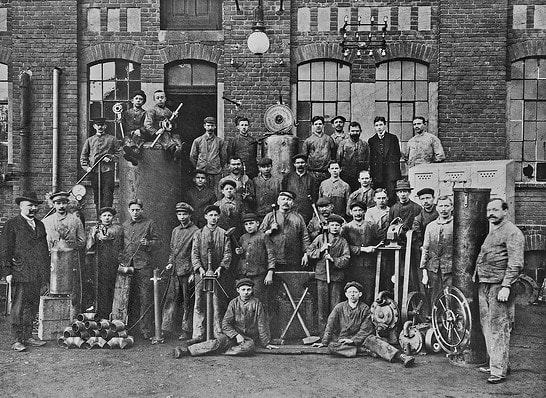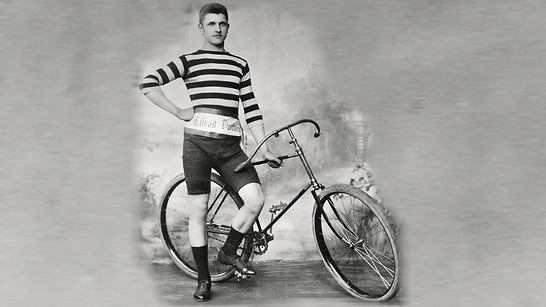Louis Opländer

The Manufacturer

Louis Opländer’s staff and products with a machine for calculating the volume of barrels (right), two dedusting units with a transmission (to the left) and a fire extinguishing unit (back middle) around 1910.
His childhood had been full of deprivation, and the times were difficult when Louis took on his father’s profession at a very young age. He developed the company’s technical solutions further and adapted them for other fields of life and application areas, e.g. heating, ventilation and sanitation. It soon became clear that his early experience in the crafts business had taught him the skill of interconnected thinking, enabling him to transfer technical solutions to larger application categories. The Dortmund-based heavy industry, for instance, required the construction of plants of remarkable size, above all for the heating and ventilation of the pithead baths. There were complex technical requirements for the pithead baths themselves as well, since thousands of miners needed large quantities of water for showering and washing. It had to run in parallel always at the right temperature, when they came up from the pit after work. These facilities, outstanding works of engineering, remain impressive to this day. Louis was an engineer – or ingenius – in the true sense of the word: he had high expectations and ambitions for the profession of an engineer, and combined this with the strong desire to significantly raise people’s standard of living. His technical plans always reflected his exceptionally strong ambition to improve technical processes and people’s quality of life.

Stove heating was replaced by central heating.
Consequently, his installations and plants were invariably of the highest standards in terms of their technical results as well as their level of efficiency, which stood for energy savings back then. Thanks to his remarkable inventive talent and quick perception, he realised soon that there was a huge need for technical innovation and began to develop commercially viable technical solutions for these emerging challenges. For instance, industrialisation meant that huge efforts were required to provide accommodation for large numbers of migrant workers, which had come to the region, within a very short time. Back then, simple construction methods were applied in building these flats. Builders used brick masonry, there was no wall insulation, and windows and doors were leaky. The kitchen stove or a heating stove (fired with coal) was used for heating the flat. Such stoves provided sufficient heat but had undesired side-effects: dust and fumes. Multi-storey buildings often had only one single chimney where all the fumes went. Consequently, the level of fumes in the flats on the upper floors was a major health risk for their inhabitants. Louis was an engineer with a strong sense of responsibility. He thus set himself the goal to reverse this negative trend in housing construction. His key objective was to replace unhealthy, unhygienic and uneconomical stove heating with central heating.

Louis Opländer, central heating in Dortmund
Steam heating systems already existed at the time but did not fulfil the minimum requirements for comfortable living from a physiological perspective. Gravity hot-water heating was a promising attempt to bring about considerable improvements. However, this only worked for smaller systems in the beginning. The concept of the hot-water heating system, although in principle a viable one, had to be improved with regard to equal heat distribution to make it a pioneering system for the future. This invention and the manufacturing of steam heaters and hot-water heating systems eventually made the ‘Louis Opländer’ firm one of the leading central heating companies. The life’s work of manufacturer Louis Opländer thus included many technical innovations, such as the machine for standardising barrel sizes he developed shortly after the turn of the century.

Louis Opländer wearing the jersey of the cycling association “Eilrad Dortmund” (Dortmund Quick Wheel)
In his private life, too, Louis Opländer was a very open-minded person who took an interest in everything new. He was a passionate sportsman: for instance, he rode his racing bike, went skiing (a sport which had only just become fashionable) or rowing. In 1898, he witnessed the inauguration of the Dortmund Ems Canal, which increased his passion for the sport of rowing, and later on, he became co-founder of the Dortmund-based rowing club Ruderclub Hansa e.V. Fair sportsmanship was second nature to him, also in his professional life.











